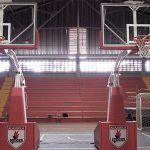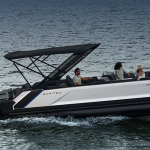Boston turned out to be the ideal venue for the Outdoor Industry Associations annual Rendezvous conference last week. Although bright and sunny, a hint of change was in the air. Leaves were beginning to turn and at night there was a pronounced chill in the air. Registration for the event was up from last year, but a flurry of last minute cancellations brought attendance to about 300.
Change is certainly ahead for the outdoor industry and the rest of America if the prognostications made by the speakers recruited to address the 300 in attendance actually materialize. From explorer and filmmaker Jon Bowermaster talking about the warming climate of portions of Antarctica or Clyde Prestowitz talking about the decline of the dollar, the consensus seemed to be that the industrys leaders are facing a historic juncture.
“We are at a point now, where these decisions really matter for us, our companies and our employees,” said OIA President Frank Hugelmeyer.
As if to underline that message, Rendezvous was bracketing by pivotal events. On Monday, a day before the conference started, Congress failed to pass the first bailout plan and sent the Dow on a historic 777 point dive. The event ended Thursday night when attendees crowded around a television in the hotels bar to watch the debate between the vice presidential nominees.
The BOSS index reflected in the chart below had the industry down 12.2% for the week, sharply down more than the market as a whole.
The conference kicked off Wednesday morning with a speech by former trade negotiator Clyde Prestowitz, who painted a rather dour picture of the countrys future. “We are just finding that capital is freezing up and freezing up all over the world,” Prestowitz told the audience. “That is a contagious sort of thing. I think it is inevitable that we will go through a recession, and I fear even worse because this is not just a U.S. problem.”
The assessment prompted some sarcasm from Hugelmeyer, who jokingly thanked Prestowitz for starting off the conference on such an uplifting note.
An informal poll of a dozen brand and retail executives revealed that only two businesses had encountered tightening credit conditions.
Interestingly, there were 50 people from retailing in attendance up from 30 last year. Those in attendance came from the industrys larger retailers and several reported they were experiencing double-digit sales growth over 2007.
The critical fourth quarter
There were was clearly anxiety over the critical fourth quarter. As the conference started, securities analysts were lowering estimates for retail stocks, citing a sharp drop in retail sales over the last two weeks of September. OIA data shows sales by core outdoor retailers remained up 10% through July, but that has not kept retailers from worrying about high fuel costs, falling home prices and the calamitous events of the last month.
At Kittery Trading Post in southern Maine, SVP of Finance David Labbe said he is concerned about how $4 gas and $4.50 heating fuel will affect Q4 sales.
“Im worried about October, November, December with whats gone on in financial markets in last few weeks,” Labbe said in a telephone interview Monday before the conference started. “If we get a cold winter, that plays into the strength of our product line, but its going to cost a lot of money to stay warm. We have never operated a retail store in Maine from the stand point of $4 gas. We dont know what thats going to do to tourism and discretionary spending. We just flat dont know.”
Makers of big tickets items are also nervous. Tim Miller, owner of Nova Craft Canoe in Ontario, Canada said that after three years of pushing hard to grow sales in the United States, his YTD sales here are off significantly. Sales are flat in Canada and up significantly in Europe. At Rendezvous, he attributed the decline in the United States to overextended U.S. consumers and said he will likely respond by putting more resources into kayaks. Miller said its hard to get a fix on whats happening. At the Outdoor Retailer show last August, many dealers told Miller their business was “okay,” but many of those same dealers had cut their orders dramatically.
Consolidation inevitable
Of course if things do get ugly, there will be winners and losers.
“For companies that have managed themselves well there are opportunities,” said Mike Wallenfels, president of Mountain Hardwear and the current chairman of OIA. “For those companies living month to month on a cash flow basis, or those who are having to extend their letters of credit to get to the next step, theyre going to have trouble going to the bank. If you are not prime credit, there is no credit available.”
Wallenfels said the industrys business model, in which vendors must lay out cash in March, but dont get paid by retailers until the following January, will be severely tested if consumers cut back spending in a big way this holiday season. “Guess what?” asked Wallenfels. “That model may get broken if brands cant handle the float.”
Of course, Mountain Hardwears parent company, Columbia Sportswear, is among the companies likely to win in such a scenario. While the company has been criticized in recent quarters for not being more leveraged, its hoard of cash is looking pretty smart right now. For the quarter ended June 30, COLM had $324.9 million in cash on hand, up nearly 70% from last year-end.
The last time the nation experienced a financial crisis of the current magnitude was during the thrift debacle of the early 1990s. Reeling from real estate losses, savings and loans began cutting off credit to retailers overnight. That forced two major outdoor retailers into Chapter 11 bankruptcy, including Erehwon Mountain Outfitter in the Chicago area.
Owner Rudi Mayer was forced to reorganize under protection of the bankruptcy court when his bank suddenly called in his note. He rebuilt the business and exited bankruptcy within six months, sold it to private investors in 2000 and bought three of six stores out of a second bankruptcy in 2004. He has since opened a fourth store.
When contacted Friday, Mayer said most the people he talks to in the industry have not felt much impact yet from the meltdown on Wall Street.
“Over the last ten days when all this doom and gloom was going on, our sales are up 30%,” Mayer said.
Many attributed weakening retail sales to consumers being distracted by the impending election and events in Washington D.C. and Wall Street. Its still too early to tell, they said, how the critical holiday shopping season will go. After all, the weather will could end up trumping economic factors.
Be careful what you wish for
The upcoming election was also top of mind at Rendezvous. In a session Wednesday, President George W. Bushs personal pollster said that there was a two-thirds chance the Democrats would capture the House, the Senate and the White House. The next day, the OIAs trade lobbyist was telling a small group in another room that that Democratic hegemony in Washington would probably create some headaches for an industry that relies heavily on imports.
Under the Democrats, trade policy will shift from negotiating bilateral trade agreements to enforcing existing agreements, said Ron Sorini, a former chief textile negotiator for the U.S. Trade Representatives Office who now lobbies on behalf of OIA.
“There are less and less free traders in Congress,” Sorini said. “If we have a Democratic president, I think its going to be a rough road for two years. I dont think its going to get easier generally to import product.”
Deciphering what this all means for consumers is harder than ever, said Marian Salzman, a highly regarded trend spotter and a partner and CMO at the global advertising firm Porter Novelli Worldwide. “There is no visibility,” she said. “Its simply impossible to forecast.”
Of course that did not keep Salzman for laying out 10 trends she sees emerging or strengthening-most of which validated a widely held notion within the industry that Americans flee to the outdoors in times of stress. Her predictions included a return to the rugged look, including more facial hair for men, as Americans long for a return to simpler, less ostentatious lifestyles. Concerns about obesity, food safety, phthalates and Americas reliance on pharmaceuticals will also drive consumers toward healthier, more natural lifestyles.
“People are going to look for simple escapes,” she said. “We all feel like we are being dragged down by big mortgages, big cars and big homes. There are people in their 40s who cant envision retirement and your industry offers a lot of opportunities to embrace a clean and simple lifestyle.”
Haysun Hahn, who tracks trends in the apparel world, urged outdoor brands to consider launching lower cost brands to capitalize as tapped out Americans move down market. “Dont be afraid to do that,” she said. “It wont hurt your brand. We have lots of evidence to prove that.” She cited Marc Jacobs as an example of a company that has spun off two other brands and now serves three different price points.
Prestowitz urged vendors to consider bringing manufacturing back to the United States. He said the dollar remains “way, way, way overvalued against Asian currencies” and said the financial crisis had hastened its demise as the worlds currency. The countrys future prosperity, he said, lies in shifting from an economy where consumer spending drives 90% of GDP to an export lead economy like Chinas, where consumer spending generates just 38% of economic output.
“You might want to think about insourcing,” he said, noting that the cost of shipping a container across the Pacific has tripled in the last two years. “Much of that production that has gone to Asia is going to come back.”
Prestowitz said several companies where he serves as a director have frozen plans to move production offshore.
His austere outlook was tempered by Dr. Michael Fralix, president and CEO of TC2, who talked about existing technology that can be used to greatly reduce the industrys environmental impact, lead times and shipping costs. Fralix said the Japanese are selling air jet printers that can color fabrics without using any water. New sewing machines, meanwhile, are already being used to “print” samples. Within ten years he sees vendors being able to transmit CAD files to remote printers to fulfill orders closer to the destination market, thereby eliminating shipping costs.
The technologies are among those TC2 would like to explore if Congress passes the Recreational Performance Outerwear Apparel Act, which would fund domestic research into more sustainable apparel production techniques in exchange for lowering duties on performance outerwear imports from Asia.
By the end of the week, it was apparent Hugelmeyer had not exaggerated. The industry and the country clearly face some big decisions in the months and years ahead.
“I leave seeing new challenges and with challenges there are always opportunities,” said Paul Fisher, the owner of Mountain Gear, a retailer in Spokane, WA. Fisher said he was glad the crisis had not come a year earlier, when he was engrossed in re-engineering many processes and expanding the size of his operations nine-fold.
When asked what her back-up plans were, Suspenz President Lauri Crowe looked almost puzzled. She founded her company five years ago to design, import and sell boat racks and is now considering whether to re-tool in China or consider sourcing closer to home. She has also decided to begin wholesaling.
“I cant think like that,” she said. “For me right now its all about growth.”















